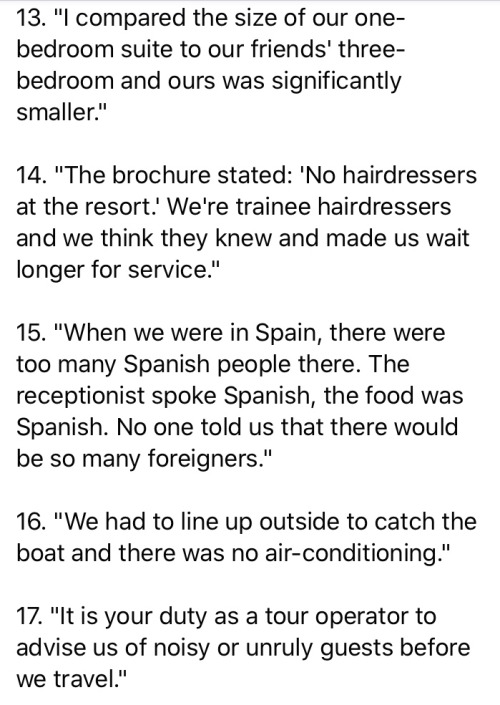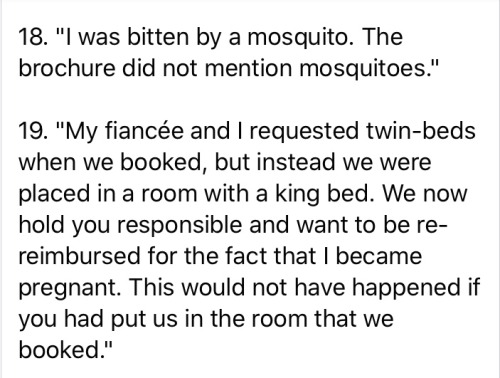Ok This Is Probably Going To Appeal To Like. 5 People. But This Is Just What It Is Like To Watch Hbo

ok this is probably going to appeal to like. 5 people. but this is just what it is like to watch hbo Rome (2005-2007) AFTER watching Master and Commander: the Far Side of the World (2003)
More Posts from Ignorethisrandom and Others



On this day in history, 9th of September 1513, The Battle of Flodden / James IV is killed
Honoring his agreement with King Louis XII of France to divert English troops who were required in France to fight for Henry VIII, King James IV of Scotland crossed into England, with the battle of Flodden (Hill) taking place at Branxton, Northumberland on September 9th 1513. The Scots numbered about 30,000 men supported by artillery, including approximately 5000 French troops, sent to Scotland to assist. Though they were outnumbered, the English were better equipped and by nightfall had won a major victory. Anywhere from 10,000 - 12,000 Scots, including King James IV, were killed. Shortly after the battle Queen Margaret Tudor was made regent to her and James’ infant son who was crowned James V on 21 September 1513. [x]
Fun Fact:
I learned this while researching for my Prince Hamid essay. Naturally reading about the Ottoman Empire leads you to learning about the Sultans and then by extension the Harem. I can’t find a place for this fact in my essay, but it left me absolutely hysterical with laughter for some time so here it is…
Prior to 1861, all artist renditions of the harem at the Ottoman palace had been done by men. Now I’m not sure if you’re aware, but the penalty for a man seeing a woman of the sultan’s harem was death. However, all these paintings were created and they resulted in so much romanticizing of the harem all throughout the western world. Beautiful women, dancers, lithe bodies, all generally partially naked just there and hanging out together. It was the college dorm fantasy of the time.
Enter Henriette Browne, a French painter, with royal and diplomatic ties, who travelled to Constantinople (among other places). She would paint there and usually favored eastern subjects. She enjoyed school scenes and scenes with women especially. Anyhow, she’s given access to the harem. Henriette is the first painter who sees the harem because she’s a woman and she was allowed by law to be there. She paints the harem, among other subjects, and returns to Europe.
Cue all of Europe’s collective gasp when she unveils her Une visite, interior de harem, Constantinople to the eagerly awaiting public. Her painting shocked and stunned them because she had actually been inside and painted no partially clothed women.

But where’s all the naked ladies?!

Madeleine de Saint-Nectaire and other heroines of the French wars of religion
Between 1562 and 1598, France was torn by civil and religious conflicts between the Catholics and the Protestants. During this period, women distinguished themselves as spies, propagandists, political leaders or negotiators. Some of them even fought weapons in hand.
Agrippa d’Aubigné tells in his Universal history of Marie de Brabançon, widow of Jean de Barres, lord of Neuvy. In October 1569, the lady found herself besieged in her home by the king’s lieutenant who had 2,000 men and two cannons. She personally defended the most dangerous breach with a pike in her hand. Shamed by her example, her soldiers fought bravely. Observers recounts that they saw her defending the breach several times with her weapon. She nonetheless had to surrender in mid-November, but was allowed to walk away freely by the king’s command. Another lady noted for her military acumen was Claude de la Tour, dame de Tournon who defended her city against the protestants in 1567 and 1570. They couldn’t, however, breach her defense and had to leave.
Ordinary women also found themselves on the frontline. The city of La Rochelle was besieged between 1572 and 1573 and the townswomen fought in the defense. Brantôme tells that the besiegers saw a hundred women dressed in white appearing on the walls. Some of them performed support functions while others wielded weapons. Their bravery was confirmed by another account who tells that the women acted as “soldiers or new amazons” and that their courage led a street in La Rochelle to be called the “Ladies’ Boulevard”. Agrippa d’Aubigné similarly shows the women fighting with sword and gun. Brantôme adds that he heard that one of these women kept at home the weapon with which she fought and that she didn’t want to give it to anyone.
Another valiant lady was Madeleine de Saint-Nectaire (c.1528/30-1588) who came from a prestigious military family. She married the lord of Miremont, gave birth to three daughters, but was widowed and had to defend her lands. Agrippa d’Aubigné tells that Madeleine led a troop of 60 cavaliers against her enemy Montal, lieutenant of the king. When she fought, Madeleine charged ahead of all others, with her hair unbound in order to be recognized by both friends and foes. In 1575, Montal lured Madeleine and her troops away from the castle and planned to seize the place. The lady returned, charged at the enemy and routed their cavalry. Montal was wounded in the ensuing fight and died a few days later.
Letters written by Madeleine have been preserved and reveal another aspect of her character. They show a modest, polite woman, who cared for her husband’s illegitimate children and treated them like her own.
Bibliography:
Arnal J., “Madeleine de Saint-Nectaire”
Bulletin de la Société des lettres, sciences et arts de la Corrèze
D’Aubigné Agrippa, Histoire universelle
Lazard Madeleine, “Femmes combattantes dans l’Histoire universelle d’Agrippad’Aubigné”
Pierre Jean-Baptiste, De Courcelles Julien, Dictionnaire universel de la noblesse de France
Viennot Elianne, “Les femmes dans les « troubles » du XVIe siècle”
I’m reading Katherine by Anya Seton
and I’m torn.
On one hand, the attention to detail is breathtaking. Seton has fully immersed me in the 14th century, palaces and plagues and all. Geoffrey Chaucer’s brief appearances are delightful. The friendships Katherine forms with the other women in her life are a driving force for most of the first half of the book. Not to mention this gem:
“I am no duchess, no queen, but I have been your equal in love, for this I dare to tell you how I feel.”

On the other hand…
The romance.

I’m over two-hundred pages in, and Katherine just seems so miserable with John. They’ve barely had a conversation about something other than how they love each other…and I cannot stress how few meaningful interactions they have had leading up to their affair.
He comes onto her as soon as his wife—her friend—dies, then even stronger as her husband is dying.

And when they finally get together, he’s in talks to get married the entire time. Their “honeymoon” overlooks his future fiancee’s homeland.
He just steamrolls her hesitations and ignores how becoming his mistress decimates her sense of self-worth. And then he gives her his deceased wife’s ring as a symbol of their love!

Every declaration of love or step forward in their relationship involves her crying and hating herself and her situation, and he is infuriatingly oblivious.
I get that a book published in the 1950′s would have faced backlash if Katherine actively pursued John. And I’m sure the references to sex caused a scandal when it was first published…but I’d rather have the heroine enjoying the hero and their relationship than simply giving up.
Let’s hope the third-act break-up will lead to Katherine putting her foot down and John recognizing that she is his equal, not just in love, because right now, their “romance” reads less like a love story and more like harassment.
The start of every Pixar/Disney film after the trailers and Pixar short before the film...

Brief Encounter (1945)
My opinion exactly.
While I was cringing and unhappy about the Arya vs Sansa stuff from last season, I am rather enjoying Dany vs Sansa - because these two have reasons to clash. Both of their positions make sense for their characters and their objectives. This isn’t about pitting women against each other for once. The problem I’ve seen is within the fandom, not the writing. It’s Team Dany vs Team Sansa. It’s fandom being fandom. But really when u look at it, outside of the zombie apocalypse and the for-now-distant threat of Cersei, this internal power struggle is perhaps the most interesting development this season.
Personally I never cared much about the magic stuff in this show. Yeah dragons and direwolves and crows and resurrecting priestesses are cool. But for me the meat of the show has always been the politics.
-
 lotus-queer liked this · 1 year ago
lotus-queer liked this · 1 year ago -
 aurpiment liked this · 1 year ago
aurpiment liked this · 1 year ago -
 imnotfinebutimfine liked this · 2 years ago
imnotfinebutimfine liked this · 2 years ago -
 griasschmoan liked this · 2 years ago
griasschmoan liked this · 2 years ago -
 sethgekcos liked this · 3 years ago
sethgekcos liked this · 3 years ago -
 internal-ethics liked this · 3 years ago
internal-ethics liked this · 3 years ago -
 thelittlebitsofhappiness liked this · 3 years ago
thelittlebitsofhappiness liked this · 3 years ago -
 smones liked this · 3 years ago
smones liked this · 3 years ago -
 lazulis-stuff liked this · 3 years ago
lazulis-stuff liked this · 3 years ago -
 launeville reblogged this · 3 years ago
launeville reblogged this · 3 years ago -
 launeville liked this · 3 years ago
launeville liked this · 3 years ago -
 conandomcclane liked this · 3 years ago
conandomcclane liked this · 3 years ago -
 delicate-traveler-tale liked this · 3 years ago
delicate-traveler-tale liked this · 3 years ago -
 vitaraminga liked this · 3 years ago
vitaraminga liked this · 3 years ago -
 kernceanemperor liked this · 3 years ago
kernceanemperor liked this · 3 years ago -
 dame-arawe liked this · 3 years ago
dame-arawe liked this · 3 years ago -
 hms-surprise liked this · 3 years ago
hms-surprise liked this · 3 years ago -
 that-albatross reblogged this · 3 years ago
that-albatross reblogged this · 3 years ago -
 mackintosh-buccaneer liked this · 3 years ago
mackintosh-buccaneer liked this · 3 years ago -
 laureavandil liked this · 3 years ago
laureavandil liked this · 3 years ago -
 silvermagpies liked this · 3 years ago
silvermagpies liked this · 3 years ago -
 spinningyarns reblogged this · 3 years ago
spinningyarns reblogged this · 3 years ago -
 bachaboska liked this · 3 years ago
bachaboska liked this · 3 years ago -
 madame-yus-wife liked this · 3 years ago
madame-yus-wife liked this · 3 years ago -
 chibi0r0 liked this · 3 years ago
chibi0r0 liked this · 3 years ago -
 unbiddenties reblogged this · 3 years ago
unbiddenties reblogged this · 3 years ago -
 unbiddenties liked this · 3 years ago
unbiddenties liked this · 3 years ago -
 spacepunksupreme liked this · 3 years ago
spacepunksupreme liked this · 3 years ago -
 spindlethief liked this · 3 years ago
spindlethief liked this · 3 years ago -
 fbi-2nd-most-unwanted liked this · 3 years ago
fbi-2nd-most-unwanted liked this · 3 years ago -
 tragedyposting liked this · 3 years ago
tragedyposting liked this · 3 years ago -
 windsweptlassie reblogged this · 3 years ago
windsweptlassie reblogged this · 3 years ago -
 woman-with-no-name liked this · 3 years ago
woman-with-no-name liked this · 3 years ago -
 brideoflammermoor reblogged this · 3 years ago
brideoflammermoor reblogged this · 3 years ago -
 partyinthemysterymachine reblogged this · 3 years ago
partyinthemysterymachine reblogged this · 3 years ago -
 barbucomedie liked this · 3 years ago
barbucomedie liked this · 3 years ago -
 hroby liked this · 3 years ago
hroby liked this · 3 years ago -
 tatzelwyrm liked this · 3 years ago
tatzelwyrm liked this · 3 years ago -
 fuckyeahnaturalphilosophy reblogged this · 3 years ago
fuckyeahnaturalphilosophy reblogged this · 3 years ago -
 trueyellowking liked this · 3 years ago
trueyellowking liked this · 3 years ago -
 butterflydannifransson liked this · 3 years ago
butterflydannifransson liked this · 3 years ago -
 mina-murray-harker liked this · 3 years ago
mina-murray-harker liked this · 3 years ago -
 skilark liked this · 3 years ago
skilark liked this · 3 years ago -
 ignorethisrandom reblogged this · 3 years ago
ignorethisrandom reblogged this · 3 years ago -
 ignorethisrandom liked this · 3 years ago
ignorethisrandom liked this · 3 years ago



















